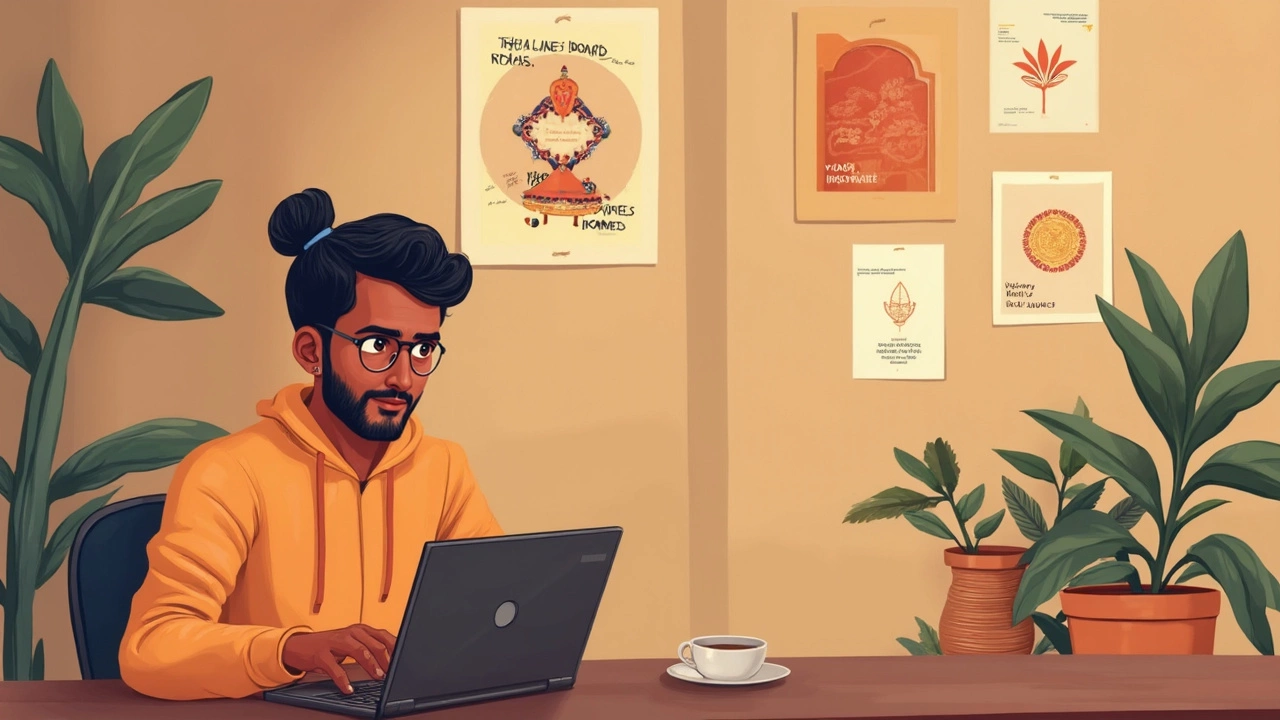Most home-based businesses fizzle out for one simple reason—they try to be everything for everyone and end up drowning in chaos. It's way too easy to say yes to every idea, every customer, and every trend that pops up. But spreading yourself thin is the fastest way to burn out and stall your business, even if it seems like you’re hustling hard.
Think about it: you start with one cool product or service. Then a neighbor wants something a little different...then their friend wants something else...before you know it, your once-simple gig turns into a mashup of tasks you don’t love and don’t make much money. Trying to please everyone doesn’t make you flexible—it just makes you unfocused.
If you want your business to last longer than the latest TikTok fad, you’ve got to pick a lane and stick with it. This doesn’t just save your sanity; it actually makes you stand out. When you’re clear about what you do and who you help, customers remember you. Word gets around. Suddenly, you’re not competing with faceless online stores—you’re the go-to expert for exactly what you do best.
- Why Doing It All Is a Trap
- The Power of Having a Niche
- Knowing Your Core Customer
- Simple Planning Beats Big Promises
- Scaling at the Right Pace
Why Doing It All Is a Trap
Way too many small business owners trip up because they think juggling tons of products or services means more money. The truth is, trying to do everything rarely works—according to the U.S. Bureau of Labor Statistics, about 20% of small businesses don’t even make it past the first year, and one of the top reasons is spreading themselves too thin. This is a classic stumbling block for small business mistake.
Wearing every hat at once sounds heroic, but all it really does is lead to missed deadlines, shoddy customer service, and a ton of unfinished projects. Harvard Business Review reports that businesses focusing on a single core offering are 40% more likely to stay profitable than those adding lots of unrelated products or services. When you offer too much, quality slips and customers notice fast.
- You waste time switching between tasks that have nothing to do with each other.
- Your marketing gets confusing—customers can’t figure out what you’re known for.
- You constantly chase supplies, tools, or skills you don’t actually need, eating into profits.
The numbers don’t lie. Here’s a quick comparison of focused vs. unfocused small businesses, based on a 2023 National Small Business Survey:
| Type | Avg. Yearly Profit | Customer Retention Rate | Owner Stress Score (1-10) |
|---|---|---|---|
| Focused | $54,000 | 74% | 4.1 |
| Trying to Do It All | $31,500 | 41% | 7.6 |
Instead of giving in to the urge to say yes to every job, set clear rules for what you will and won’t take on. Make a list of your top three best-selling or most profitable services and cut the rest. The more specific you are about what your business does, the easier it is for people to refer the right customers to you—and for you to actually enjoy running your business.
The Power of Having a Niche
If you ask successful home-based business owners what helped them grow, most will tell you they got specific. Having a niche isn't just about doing what you like—it's about making it super clear for your customers why they should pick you instead of any other shop on the internet. When you focus on something you're good at and that people actually want, your marketing gets easier, word-of-mouth works, and you're not stretching yourself so thin.
Look at home bakers for a second. Instead of just being another cake person, the ones who make allergy-friendly or keto desserts often have waiting lists. One study from the Small Business Administration found that businesses focused on a tight niche are small business mistake avoiders—they’re 30% more likely to still be running after five years compared to businesses that try to offer everything to everyone.
- You stand out from endless lookalike businesses.
- Customers trust you faster—people want the expert, not the generalist.
- Marketing costs drop because you’re not chasing everyone.
Here’s a quick real-world breakdown to see why this works. Say you run a home-based business selling pet products. If you just advertise “pet treats,” you’re lost in a big crowd. But if you focus on “homemade treats for dogs with sensitive stomachs,” suddenly you’re speaking to a specific customer. They’re much more likely to find you and buy.
Let’s check some real data that shows the edge of having a niche:
| Type of Approach | 5-Year Survival Rate | Typical Customer Conversion Rate |
|---|---|---|
| Generalist (all products/services) | 45% | 1-2% |
| Niche Focused | 58% | 5-7% |
So, getting specific isn’t just about making life easier. It straight up works better. The more you narrow down who you help and what you offer, the more people will actually buy from you.

Knowing Your Core Customer
Here’s the thing—if you don’t know exactly who you’re selling to, you’re really just guessing. That’s why small home-based business owners who nail down their core customer have a huge head start. The businesses that actually turn a profit are laser-focused on a specific group, not just anyone who might stumble in.
Let’s get practical. Take time to really define your ideal customer. Are you helping busy parents juggle home life, or are you after remote workers hunting for the best gadgets? You can’t cater to both with the same message or product. A recent survey by HubSpot shared that 61% of marketers say their biggest struggle is generating traffic and leads. That’s usually because they’re not targeting the right audience in the first place.
- Ask real customers why they buy from you. The reasons might surprise you—and point you toward others just like them.
- Check your sales data. What ages, locations, or buying habits show up over and over?
- Spy on your competition a bit—see who’s buying from them and what questions they ask.
- Use social media or online surveys to get a quick sense of who’s most interested in what you’re offering.
If you’re selling handmade candles and realize most buyers are women between 30-50 who buy for gifts, aiming your marketing at teenage guys won’t move the needle. People want to feel like you "get" them, so speak their language. Check out the kind of words they use, the problems they talk about, and what actually matters most to them. Sprinkle those details into your product descriptions, emails, and social posts.
Just to make it crystal clear, here’s a look at how understanding your core customer affects different home-based business types:
| Business Type | Core Customer Example | What Matters Most to Them |
|---|---|---|
| Homemade Soap Seller | Health-conscious women, 25-45 | Natural ingredients, gift-worthy packaging |
| Freelance Web Designer | Small local businesses | Affordability, quick turnaround |
| Online Tutoring | Parents of grade-school kids | Results, engaging lessons, safety |
Knowing your small business mistake means you can dodge it from the start. Stay focused on who you serve, and you’ll save yourself endless second-guessing and get better results from every effort.
Simple Planning Beats Big Promises
A lot of small businesses get stuck making big promises but have zero real plans behind those words. It’s easy to fall into the trap of “I’ll double my sales this year” or “I want to offer ten new products by the fall.” But without a simple, practical plan, these big goals turn into wasted effort and broken trust—especially with customers and yourself.
Did you know that according to the U.S. Bureau of Labor Statistics, around 20% of small businesses fail in their first year? One huge reason is bad or vague planning. When you work from home, it’s even easier to wing it—your kitchen becomes your office and your meetings are sometimes just with your dog. That’s why your best bet is to ditch the overhyped promises and start with a basic action plan. Nothing fancy, just clear steps you check off each week.
- Pick 1-2 main goals for the next three months, not ten for the whole year.
- Break each goal down into weekly mini-tasks you can actually finish.
- Track what’s working and what’s not—pivot if you have to, but don’t overthink it.
- Keep your plan visible—stick it to your fridge if that helps.
Here’s a quick comparison of how simple planning stacks up against grand promises:
| Big Promises | Simple Planning | |
|---|---|---|
| Focus | Scattered | Clear |
| Results | Unpredictable | Measurable |
| Customer Trust | Weakens over time | Builds steadily |
| Workload | Overwhelming | Manageable |
Small changes in your planning make a big difference. Even just putting your small business mistake learning into a plain notebook shows you’re running a real business, not just brainstorming dreams. If you can finish your main to-dos most weeks, that’s actually how you beat most home-based business odds—one small, solid move at a time.

Scaling at the Right Pace
Scaling sounds exciting—adding new products, hiring, maybe renting space. But moving too fast can mess up a good thing before it even gets rolling. For home-based businesses, smart growth is a balance between meeting demand and not getting in over your head.
Jumping the gun on growth can drain your cash. In fact, research from the U.S. Bureau of Labor Statistics shows that 20% of small businesses flop in their first year, and among the top reasons: expanding before they’re ready. Tossing more products on your site or buying a ton of inventory often leads to wasted money and stuff you can’t sell.
The trick is scaling with purpose. Here’s what you want to do if you’re thinking about growing your home-based business:
- Run small tests before offering new services. If you bake cookies, try a limited run of a new flavor and see if it really sells before adding it to the menu.
- Watch your numbers closely. Track daily sales, website clicks, and repeat customers. Smarter decisions come from hard numbers, not hunches.
- Outsource or automate boring repeat tasks instead of hiring employees right away. Tools like QuickBooks or Shopify can save you time and money without adding payroll headaches.
- Make sure your demand is steady. Don’t scale up after a single busy week—wait until you see regular patterns.
Check out this quick look at potential pitfalls of rapid scaling compared to scaling at the right pace:
| Scaling Too Fast | Scaling at the Right Pace |
|---|---|
| Stockpiling products that don’t sell | Test products in small batches |
| Hiring too soon, burning cash | Automate or outsource first |
| Losing quality control | Track customer feedback closely |
| Stress and burnout | Maintain manageable workload |
Home-based businesses don’t need to chase every opportunity. Growing when your numbers (and gut) both say “go” means you’re building something that will actually last. If you keep your focus on delivering value to your small business mistake—yep, that’s the one people fall for when they scale too quickly—you’ll stay ahead of problems and run a much smoother operation.


